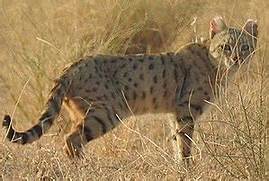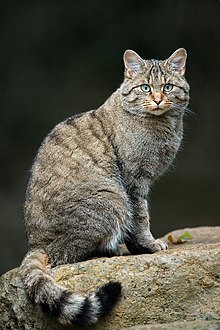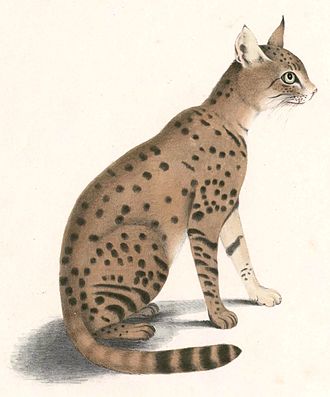Meet another of the small wildcat breeds that still inhabit our world. Read on to learn about the Asiatic wildcat, a subspecies of the African wildcat. This cat also goes by the name of the Asian steppe wildcat and the Indian desert cat.
This cat’s Latin name is Felis lybica ornata. The cat, about the size of a domestic cat, lives predominantly in Asian countries.
Habitat Of This Cat
You might find him in an area which extends from the eastern Caspian Sea north to Kazakhstan. The area includes western India, western China, and northern Mongolia.
The wildcat inhabits arid and semi-arid areas. This animal may appear in forests or mountains, on the plains, or along the coast. Mostly, you will see it in scrub deserts up to an elevation of 3,000 feet.
Enjoy the video of this little cat. Not much drama in this one, but notice how well the cat’s coat acts as a camouflage in his territory. Now, that’s an effective use of natural coloring!
Smaller than the European wildcat and with lighter fur, this cat has pale-colored fur with spots on the upper body.
Its tail, long, thin, and tapering, has black rings and a black tip. Very few spots appear on the cat’s lower throat and neck. You will also see a dark stripe from the corner of its eye to the base of its ear. Tufts of hair grow above the ears. Its legs grow longer than the legs of a domestic cat.
The Cat’s Color Varies Dependent On Location
In Pakistan and India, the cat’s color comes in a pale sandy grey, while the cats living in Central Asia have more of a greyish-yellow or reddish color.

The Asiatic wildcat lives a solitary existence, and can become quite territorial if provoked by an invader. The only time he appears in a group becomes during breeding season.
Their average gestation period lasts for 56 to 68 days, and the average litter size can range from two to four kittens.
Can They Breed With Domestic Cats?
Wildcats have been known to breed with domestic cats, producing feral-domestic hybrids. If this wildcat is kept as a domestic cat, it can breed three or more times a year.
Often, the cat will use rock crevasses or burrows dug by other animals. Pakistan reports that in the heat of the day, this cat may shelter underground or in dense cover to stay cool.
This animal hunts alone, nocturnally. A great hunter, it most commonly preys upon desert gerbils, hares, birds, small rodents, insects, and reptiles. In India, it will also kill snakes, such as cobras and saw-scaled vipers.

The only time you might see this cat traveling in a group occurs just after breeding season, when the female may travel in a group with her kittens.
We do not know how many of these cats might live in the world because their numbers often get included in the group that also includes European wildcats.
Threats
However, we do know that the cat faces a considerable threat from habitat loss and poaching.
In past years, these Asiatic wildcats suffered from heavy trapping for their fur. However, at present little international trade exists. Not that long ago, Afghanistan collected many pelts, and in 1977, over 1200 pelts of these small creatures became used as creative materials for different articles that were then sold in bazaars.
Now, in Afghanistan the species has become legally protected, and all hunting and trading has been banned.
Lifespan of these cats lies between 11 to 15 years. However, some of the Asiatic wildcats that have become domesticated can live up to 20 years.

Don’t think you can outrun this cat, as it can run up to a speed of 49.7 miles per hour. That’s certainly faster than I can run!
Here is another video, offering you facts about wildcats of the world. You will get a glimpse of our Asiatic wildcat here, but information on this feline seems scarcer than what I can find about other cats. There could come a time when there will be no more wildcats, as habitat takeover or destruction and poachers wanting their fur present two very real dangers to these small felines.
References I used for this post: wildcatconservation.org/wild-cats/wildcat/asiatic-wildcat/ kidadl.com/animal-facts/asiatic-wildcat-cat-facts bigcatswildcats.com/asiatic-wildcat/ en.wikipedia.org/wiki/asiatic-wildcat

